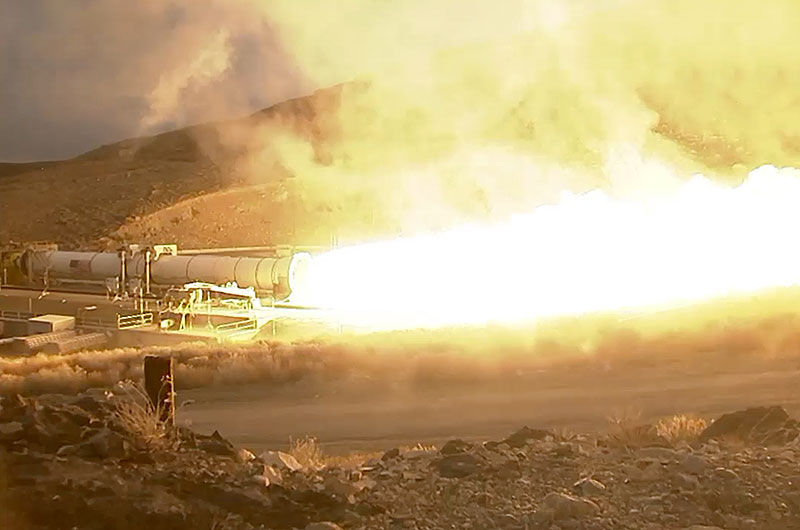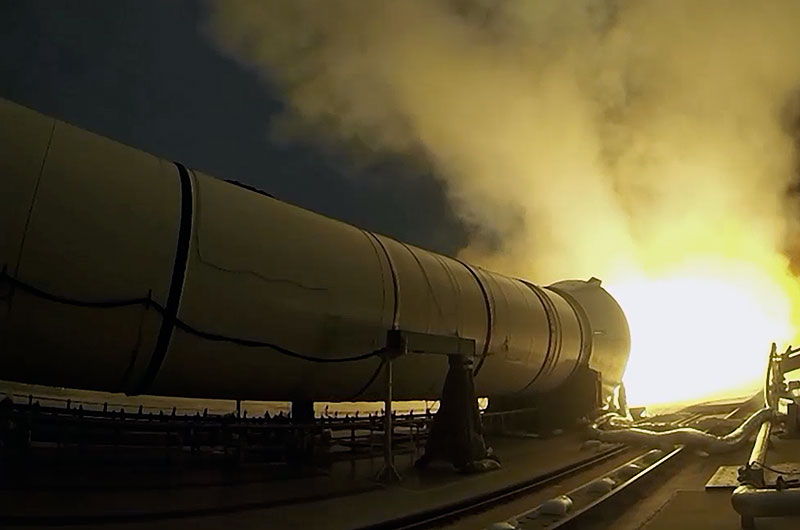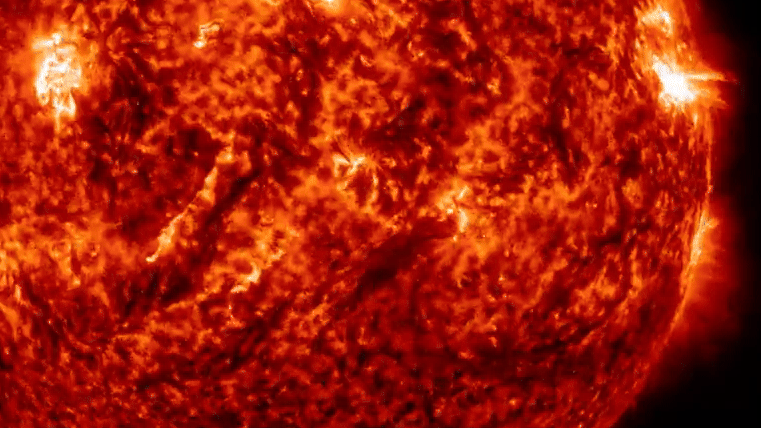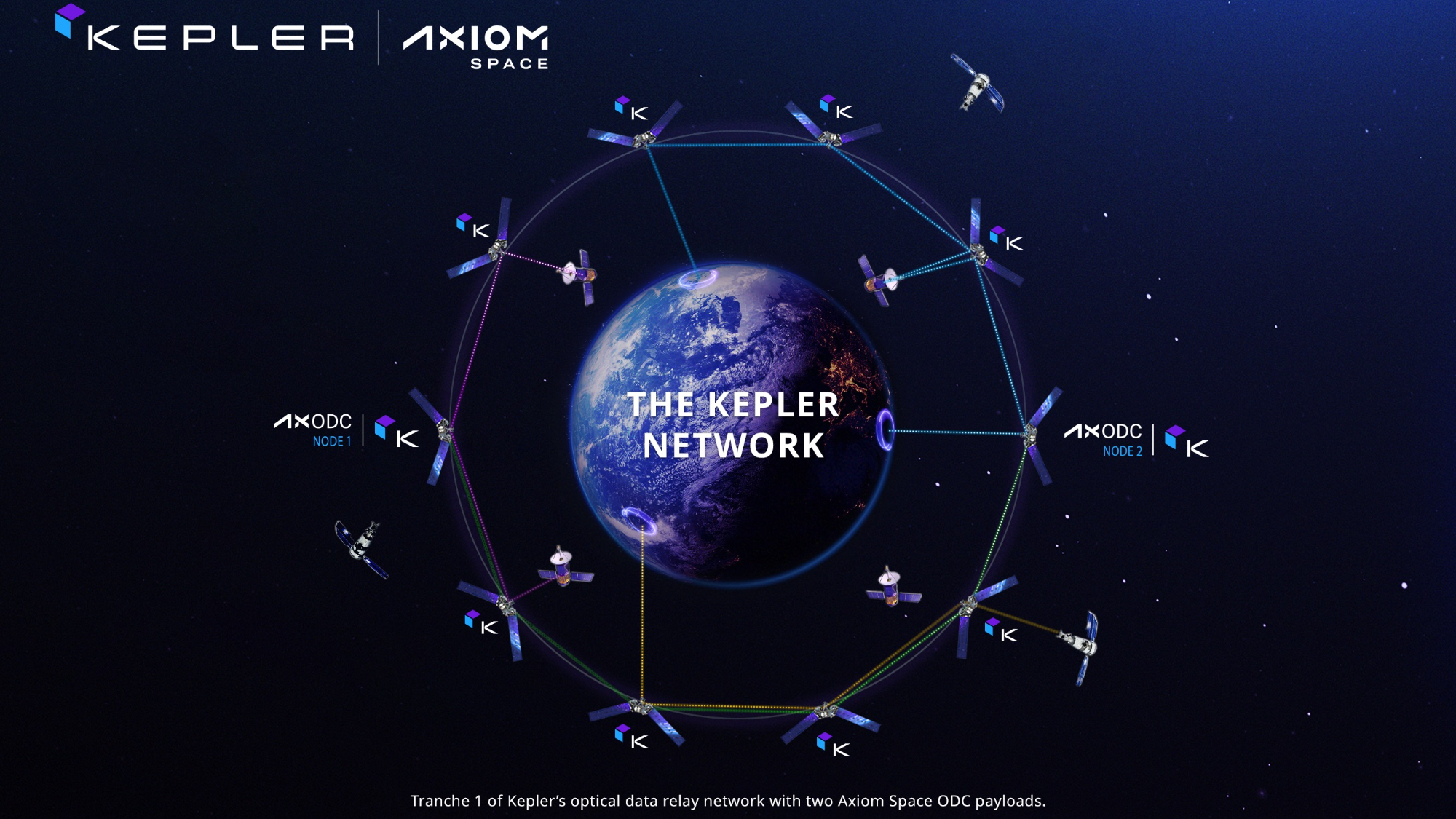World's Largest Solid Rocket Booster Fired in Ground Test for NASA

The world's largest solid rocket motor roared to life in Utah Wednesday (March 11), but instead of lifting off the ground, the massive booster, laying on its side, remained in place as data was collected to qualify its use on NASA's new heavy-lift launch vehicle.
Orbital ATK, Inc., the primary contractor building the twin side-mounted boosters for NASA's Space Launch System (SLS), conducted the test fire at its facility in Promontory, Utah. The motor ignited at 11:30 a.m. EST (1530 GMT) as scheduled and burned for a full two minutes.
"It looked really clean, we are really excited," said Charles Precourt, the general manager for Orbital ATK's propulsion systems and a former astronaut. "Really nice result." [See more photos of the SLS test fire]
An advanced, more powerful version of the solid rockets that launched the space shuttle, the first SLS qualification motor (QM-1) put out 3.6 million pounds of thrust, greater than the force of 14 four-engine Boeing 747 jetliners at full take-off power.
"It is a big day for us, the culmination of many years of experience work during the space shuttle program that will transition now to the SLS," Precourt said at a pre-test briefing on Tuesday. "The real success is collecting the information that we need to go further to be able to put [a] crew on the vehicle in a few years."
NASA is building the SLS to fly missions into deep space, with the ultimate goal of sending astronauts to Mars by the 2030s. The first SLS flight, targeted for 2018, will carry an uncrewed Orion spacecraft out beyond low-Earth orbit to test the performance of the integrated system. The first crewed launch is expected to follow in 2021.
When completed, two solid rocket boosters and four main engines (also reused from the shuttle program) will power the SLS's first stage. The boosters will provide more than 75 percent of the thrust needed for the rocket to escape Earth's gravitational pull.
Get the Space.com Newsletter
Breaking space news, the latest updates on rocket launches, skywatching events and more!

The QM-1 booster, which was assembled from case parts previously flown on 23 space shuttle missions and an aft skirt used on the first shuttle flight, STS-1, in 1981, differs from those used during the earlier program in a number of ways.
The avionics (flight control) systems, have been upgraded for SLS to be more reliable and capable. In addition, the rubber-based ablative insulation used to shield the motor's metal skin from the temperatures generated by the burning propellant has been reformulated to lighten the rocket by a couple of thousand pounds.
"The biggest change is that we added a segment, which is 25 percent more propellant for way more performance," Precourt said. "The typical shuttle booster would give you about three million pounds, this is a little over 3.5 million pounds of thrust, so it's the kind of performance we need to get our exploration journey to Mars off the ground."
The booster's additional segment, bringing the total to five, extends the length of the motor to 177 feet (54 meters). The SLS, in its initial 70-metric-ton (77 ton) configuration, will stand 321 feet (98 m) tall.
For Wednesday's test, the five-segment booster was pre-heated to 90 degrees Fahrenheit (32 degrees Celsius) to test the rocket's design at the highest end of its accepted propellant temperature range. A second qualification test (QM-2), planned for early 2016, will be a cold test, where the booster will be conditioned to 40 degrees F (4 degrees C), the low-end temperature for the motor.
"These two qualification tests are major steps in getting the booster certified for the first two flights of SLS and another step closer on the journey to Mars," Alex Priskos, NASA's manager for the SLS boosters office, said.
With Wednesday's firing complete, Orbital ATK engineers will begin analyzing the data and dissecting the booster to measure its performance.
"What we are looking for in success is in the 700 channels of data that we are collecting — pressures, temperatures, vibrations, loads, ability of the nozzle to move where we command, that the avionics run correctly," Precourt said.
QM-1 marked the 57th ground firing of a space shuttle or SLS booster since 1977. It was Orbital ATK's fifth test of a five-segment solid, including three demonstration motors fired after the final shuttle mission in 2011.
Click through to collectSPACE for more photos and video from QM-1 solid rocket test fire.
Follow collectSPACE.com on Facebook and on Twitter at @collectSPACE. Copyright 2015 collectSPACE.com. All rights reserved.
Join our Space Forums to keep talking space on the latest missions, night sky and more! And if you have a news tip, correction or comment, let us know at: community@space.com.

Robert Pearlman is a space historian, journalist and the founder and editor of collectSPACE.com, a daily news publication and community devoted to space history with a particular focus on how and where space exploration intersects with pop culture. Pearlman is also a contributing writer for Space.com and co-author of "Space Stations: The Art, Science, and Reality of Working in Space” published by Smithsonian Books in 2018.In 2009, he was inducted into the U.S. Space Camp Hall of Fame in Huntsville, Alabama. In 2021, he was honored by the American Astronautical Society with the Ordway Award for Sustained Excellence in Spaceflight History. In 2023, the National Space Club Florida Committee recognized Pearlman with the Kolcum News and Communications Award for excellence in telling the space story along the Space Coast and throughout the world.










